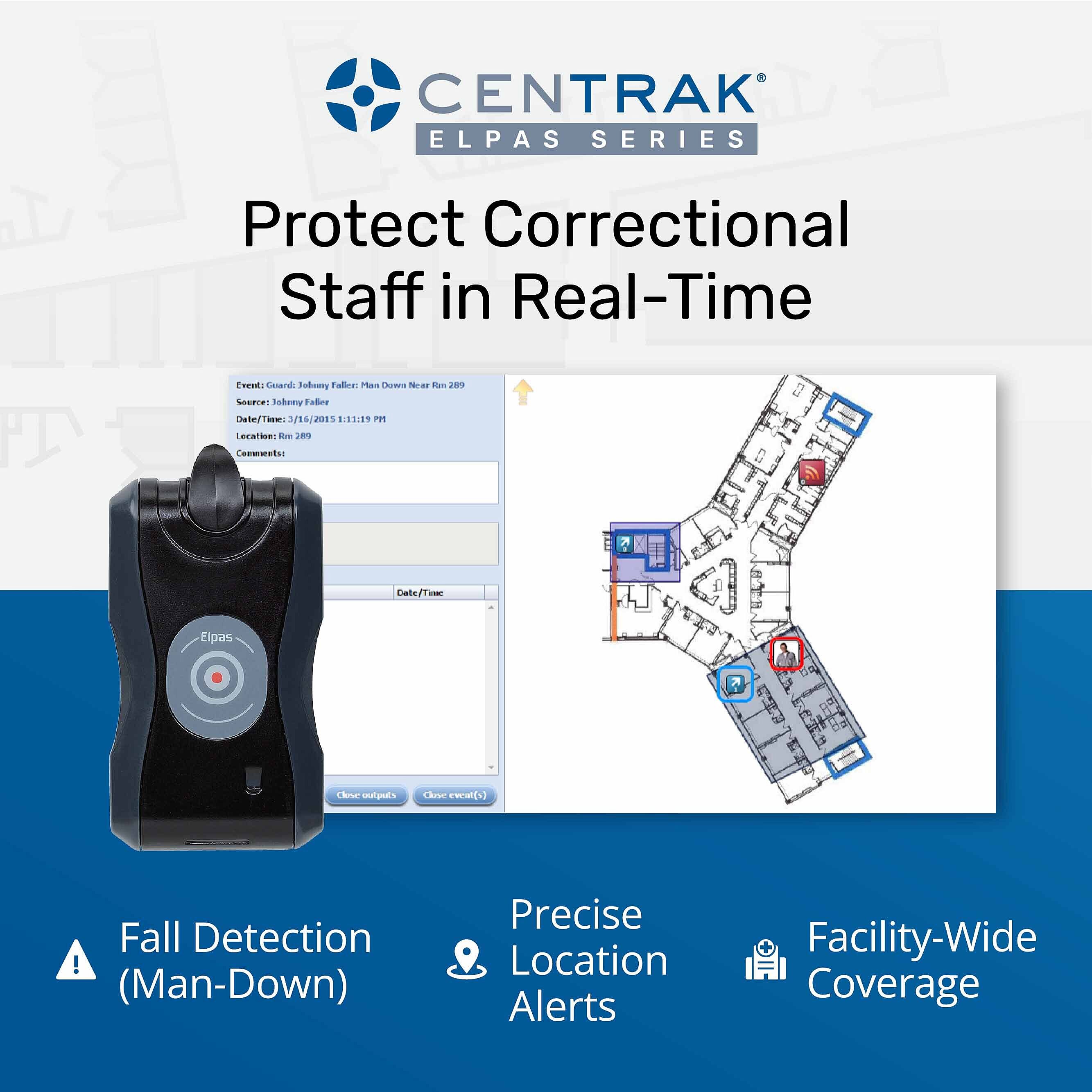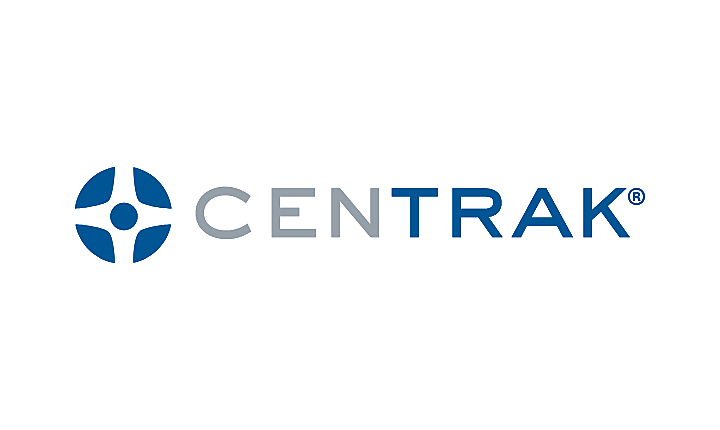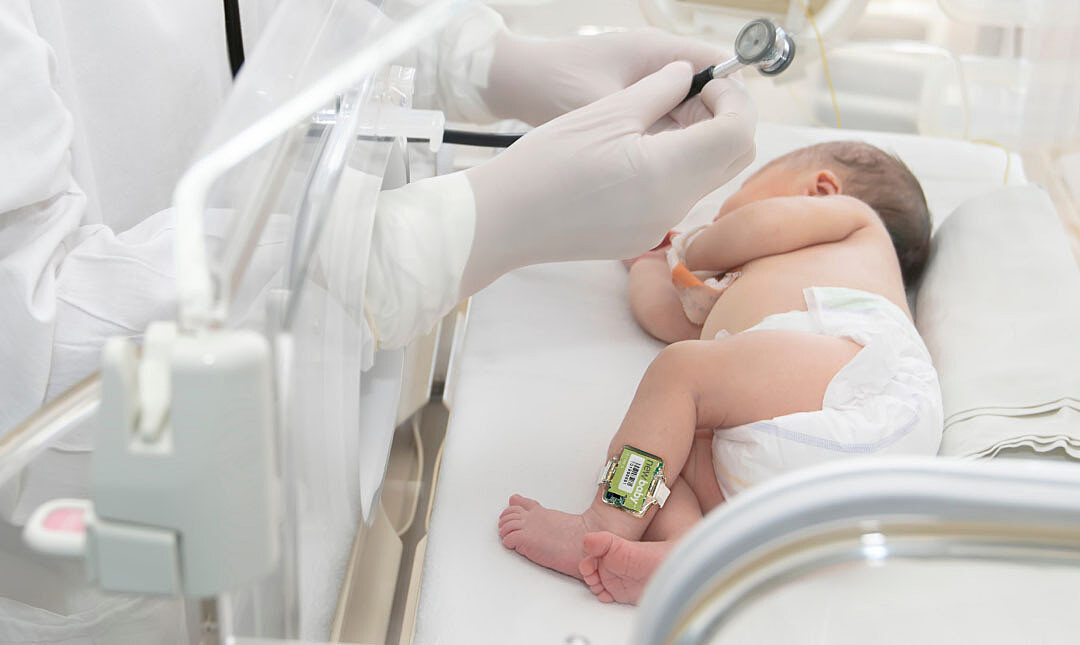What are Real Time Location Systems in Healthcare?
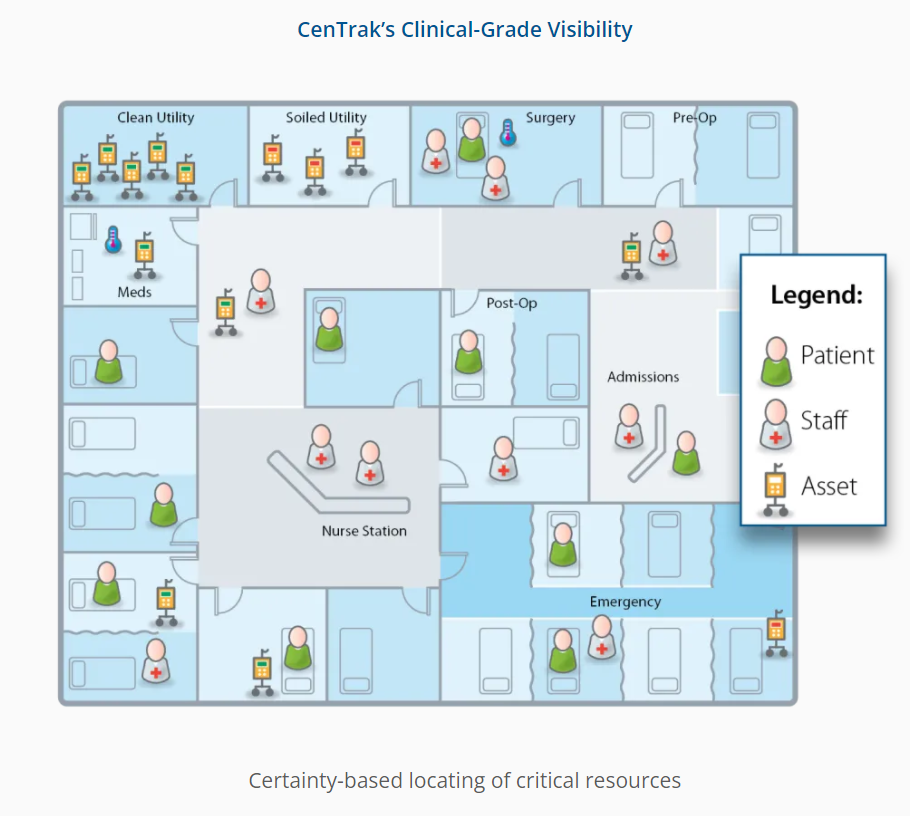
Healthcare executives constantly grapple with issues concerning the safety of their facility, the satisfaction of their staff, the quality of care provided to their patients and the costly workflow inefficiencies that impact their bottom line. Oftentimes, information technology (IT) innovation for healthcare is cited as a potential vehicle for improvement. Innovators are constantly working to create technology that can both promote patient safety and support streamlined business operations. What is one of the most effective ways of addressing these challenges? Integrating Real-Time Location Systems (RTLS) into hospital processes.
What is RTLS (Real Time Location Systems) in Healthcare?
Real-Time Location Systems (RTLS) in healthcare are used to provide immediate or real-time tracking and management of medical equipment, staff, and patients within all types of patient care environments. While the locating systems differ from using location data captured by satellite trilateration, it can be thought of as a type of “indoor GPS” for hospitals. However, more so than just locating tagged assets, accurate locating technology that easily integrates with other Healthcare IT solutions enables facilities to improve workflow, reduce costs and increase clinical quality. CenTrak’s RTLS solutions drive the adoption of dozens of use cases via the integration of various tags and badges, technology platforms (Wi-Fi, Infrared, Bluetooth Low Energy, Low Frequency, and others), hardware infrastructure (readers & exciters) and other components (servers, middleware & end-user software).
CenTrak is reinventing the standard of healthcare delivery with our RTLS and Environmental Monitoring solutions.
How does it work?
RTLS badges or sensors are attached to patients, staff members, or equipment and CenTrak devices can be positioned wherever location data is needed including rooms, hallways, and bays. The battery-powered devices emit a unique space ID (e.g., room), which is received by a tag located within that space. The tag communicates the space ID and its own unique ID to a location server using Wi-Fi networks, BLE networks, and/or CenTrak's dedicated UHF network, providing real-time and historical information about a sensor’s location within the facility. This is streamed in real-time to RTLS software applications and other integrated healthcare IT solutions.
Healthcare administrators, decision makers, and unit-level leaders can analyze the comprehensive data gained from the RTLS system via intuitive reports and dashboards. These data insights leverage the power of real-time location data to show users how to increase operational efficiency, improve the patient experience, and enhance safety for all.
Types of RTLS technologies
There are various IoT technologies that generate value in healthcare, including those utilized in real-time location systems. Enabling facilities to locate, automate, and monitor the status of patients, staff, and equipment generates operational efficiencies and improvements in patient care. As new technologies emerge, smart devices with built in IoT capabilities create additional value – providing big data for strategic decision making for the optimization of day-to-day operations. These solutions are powered by an ecosystem of location infrastructure, badges, tags, and other 3rd party devices (such as phones), leveraging a variety of technologies, including, infrared (IR), active RFID, Wi-Fi, Bluetooth Low Energy (BLE), and Low Frequency (LF).
Health system needs often vary and different RTLS technologies can give you various levels of accuracy, depending on the level of depth and data insights preferred. Sometimes all you need to know is whether a piece of equipment is on the right unit. In other instances, maybe you need to know whether a surgeon has made it to an operating room, or if a nurse is close to a patient who has requested assistance for urgent care. The hierarchy of location accuracy can include:
Locating at Entry or Exit Points: Using Low Frequency (LF) technology, you can create “choke points” to determine the course of different tags as they move through egress points. Real-time alerts can be sent to stop expensive mobile medical equipment from leaving the facility, or even enable automatic door locks.
Presence-Based Locating: Determines if a tag is within a certain parameter — normally a fairly wide net. This level of location often used Wi-Fi or BLE-based RTLS.
Room-Level Locating: Using a locating technology that does not bleed-through walls, i.e., infrared light (IR), you can locate an RTLS tag or badge within the confines of a particular room. For example, in the event that a nurse must call for emergency assistance, RTLS can tell security personnel the exact room where the nurse is located.
Precise/Sub-Room Level Locating: In the hospital context, precise locating can find the exact tag location pinpointed on a detailed floorplan. Rapid location and condition updates are capable of accurately capturing interactions between equipment, patients and staff within seconds, facilitating the collection of clinical milestones and automating workflow. This is called “Clinical-Grade” Locating. This type of technology, like second generation infrared (Gen2IR™) can be used to divide dual occupancy rooms or bays that are separated by nothing more than a curtain.
Estimation-based RTLS solutions enable tracking in a hospital’s unit or floor, whereas Clinical-Grade Locating™ systems are able to achieve room, bed, and bay-level locating for true workflow automation and actionable data analytics. Each indoor locating technology has its place in the market and CenTrak has adopted an interoperable platform for integrating these technologies. These facts highlight the importance of scalability in selection of the appropriate RTLS platform.
Managing and maintaining the RTLS system
Once a system implementation is complete, it is imperative to manage system health. CenTrak’s Connect Pulse™ platform is used to view CenTrak RTLS device details, aid in battery replacement activities and device health troubleshooting for CenTrak’s real-time location systems.
Benefits of an RTLS System
Hospitals face business issues similar to any other large organization. Automated monitoring and data intelligence gathering for the reporting and analysis of a facility’s processes allows healthcare executives and senior management to implement efficient processes, introduce cost-savings measures and increase patient and staff safety and satisfaction. Data insights gathered from an RTLS system can inform long-term system-wide decisions and cause significant positive impact.
1. Supports Patient and Staff Safety in Hospitals
Patient risks, including equipment errors, hospital-acquired infections or physical attacks are a threat within healthcare facilities. A Real-Time Location System can promote safety by reducing room for such risks. CenTrak’s RTLS solution also integrates with traditional security systems, access control and mass notification systems, and various third-party applications.
Examples of how RTLS can improve patient, staff, and visitor safety include:
The ability for nurses and staff to call for help quickly in the event of an emergency or physical threat.
The ability to create alerts letting staff and nurses know if a patient has wandered into an area where they aren’t supposed to be. This is particularly crucial when caring for patients with dementia or Alzheimer’s.
The ability to protect infants from abduction attempts as well as improper mother/baby matching using alerts and security system/door lock integrations.
The ability to monitor hand hygiene compliance for reduced hospital acquired infections.
The ability to create contact tracing reports based on knowing when and which staff members and patients have come into contact with an infected person or asset.
The ability to quickly locate hospital mobile medical equipment that is part of an active recall or due for cleaning or maintenance.
RTLS Solutions for Staff Safety and Panic Alerting
During emergencies in healthcare facilities, every second counts, and without accurate real-time information, response staff often must guess between floors and rooms. An RTLS emergency alert offers peace of mind by instantly and accurately conveying the exact user location and directing the fastest response path. For example, RTLS technology enables healthcare staff to discreetly send panic alerts to the security team from a readily accessible button on their wearable badge. Once activated, the badge communicates the staff member's location to a computer workstation, in-unit display monitor, and security dispatcher via email, SMS alert, or VoIP phone message.
RTLS Solutions for Infant Protection and Wander Management
Healthcare providers and staff also enlist the help of RTLS safety solutions when it comes to some of the most vulnerable populations in a hospital, healthcare system or a senior living community. Designed to enhance infant safety, CenTrak’s newbaby™ infant protection system offers peace of mind for staff and parents caring for newborns. The system escalates alerts and safety measures when an infant is approaching unauthorized zones or points of egress, automatically locking doors, and disabling access to nearby elevators. A tamper sensor on the band worn by the infant detects if the band is cut or the tag is no longer touching the child’s skin. Events are then logged, and the staff workstation receives an alert. Similarly, acute care settings and senior living communities have sought RTLS safety and security solutions to keep both patients and residents safe from elopement or wandering.
RTLS Solutions for Infection Prevention and Control
Research shows that using the secret shopper method to report hand hygiene compliance or relying on staff memory and manual interview processes to assess infection risk and perform contact tracing can be grossly inaccurate, time-consuming, and expensive. CenTrak’s infection control solutions and RTLS technology automate these labor-intensive tasks while improving the safety of patients and staff in your facility. The hand hygiene compliance sensor integrated into hospital soap or sanitizer dispensers detect when an RTLS staff badge is nearby and if the individual has activated the dispenser or hand washing station according to the hospital’s protocols. Compliance data can be viewed at the hospital-, departmental-, role-, or individual-level. This allows for the facility to audit hand hygiene processes and improve workflow to increase compliance.
RTLS also allows healthcare facilities to create a contact tracing report within seconds. With wide-spread infection control measures, healthcare facilities can inadvertently cause unnecessary panic, negatively impact resource availability, and hinder patient care. With more informed risk assessments of who or what has encountered a dangerous contagion, healthcare staff can implement the appropriate testing and quarantine protocols that limit infection spread.
2. Improves Patient Experience
RTLS technology can be particularly helpful not just for patient safety, but also for experience and satisfaction. Patient satisfaction has become increasingly more important since the Affordable Care Act tied Medicare reimbursements to patient satisfaction surveys. About half of patients surveyed in fall 2022 by The Beryl Institute responded a good patient experience contributes to their health outcomes, with 35% saying it would influence their future healthcare decisions. Influential feedback when it comes to a health system or hospital deciding to invest in RTLS solutions which could increase patient satisfaction.
How hospital digital wayfinding impacts patient experience.
Hospitals lose significant revenue every year due to late or missed appointments directly related to patient confusion with parking, directions, and unrealistic time estimates. Additionally, staff members are often stopped for directions which takes time away from completing their critical tasks efficiently. Digital wayfinding helps remedy these disruptions. CenTrak offers a complete patient-centric solution, including EMR integrations for real-time appointment reminders with directions to the closest parking area. Utilizing Bluetooth Low Energy (BLE), GPS, and/or Wi-Fi capabilities, the solution offers turn-by-turn navigation, highlighted routes, intuitive search by keywords or points of interest, and custom routing such as wheelchair-accessible paths.
RTLS and Patient Infotainment Integrations
CenTrak’s RTLS solution also integrates with electronic whiteboards or Patient infotainment systems to display and announce the names of staff members as they enter patient rooms. This allows clinicians to ensure patients are informed, comfortable, and safe. It also enables family members to be more informed regarding bedside care.
3. Streamlines Workflow
Tracking patient flow for throughput management can also help to recognize and address bottlenecks. Appropriate solutions can be tailored and monitored for common patient problems that lead to complaints, including:
Long wait times.
Overcrowding in outpatient clinics, emergency rooms and post-anesthesia care units.
Delayed or rescheduled surgeries.
Not having enough beds for patients.
The fact of the matter is that hospital patients are in a near-constant state of motion. Between X-rays, moving around for rehabilitation purposes or switching between perioperative milestones, there is a lot of room for unnecessary delays or error. Departments that can operate more efficiently with real-time location systems will be the ones to increase patient satisfaction and decrease stressors during their stay.
4. Reduces Cost with Analytics
RTLS can also help integrate your data systems and streamline information across the entire health system. This is especially helpful when considering hospital business processes. Examples of trends RTLS can help you measure include:
Utilization rates for different pieces of hospital equipment to reduce rental needs and expenses.
Amount of time a patient waits for a particular service or to see a doctor.
How long the patient stays in the hospital.
Time spent with clinicians or elapsed time receiving other treatments.
Integrating RTLS technology into hospitals can help cut down on unnecessary expenditures. One review, published in the International Journal of Health Geographics, projected that hospitals buy 10% to 20% more portable equipment than is needed for operational purposes, simply so that staff can find it when they need it.
Some items, perhaps most notably an ICU ventilator, come at a very high premium. Purchasing the optimal amount based on utilization and having hospital RTLS keeping track of these machines can help reduce the number of asset redundancies. This can cut down on costs as well as save time for your clinicians when equipment is always where it should be.
5. Mitigates Staffing Shortages
Staffing shortages in hospital systems are becoming increasingly pronounced. For example, the 2015 Survey of Registered Nurses by AMN Healthcare revealed the fact that 62% of nurses older than 54 report they are considering retirement with the majority planning to do so within the next three years. Beyond nursing, the shortage problem persists across other essential hospital physicians, including operating room doctors, members of the neonatal department and the intensive care unit. Healthcare facilities have little choice but to address these shortages head-on by optimizing current resources while continuing to provide quality care.
A real-time location system for hospitals can help to mitigate the effects of the shortage and help hospital executives do more with less. Here is how RTLS can help in a few of the most critical areas of the hospital:
Operating room: Automating events and documentation like tracking case status, milestones, patient location and department work queues can provide quick insights into the department. This reduces stress while improving efficiency.
Intensive Care Unit (ICU): Finding equipment and assets as quickly as possible in the ICU can quite literally be the difference between life and death. Staff members under pressure may not have enough time to locate needed assets. RTLS solutions, like those offered by CenTrak, have the ability to pinpoint the exact location of needed resources with 100% accuracy. When clinicians can perform their jobs without being interrupted by misplaced equipment challenges, they enjoy a more seamless workflow. This can come with the bonus effect of increased job satisfaction.
Emergency Department (ED): Patient experience, especially in the ED is under constant criticism. By leveraging real-time location system technology, an ED can utilize robust data and insights to inform important decisions. Insights created a framework for executive-level decision-makers to see where there are bottlenecks in care, patient care disruptions, and workflow issues. CenTrak’s workflow automation platform, WorkflowRT, allows for staff to easily obtain patient information and reduce time spent on non-value-added tasks.
How to Choose an RTLS Provider
Finding a strategic RTLS partner with a comprehensive solution suite simplifies the system expansion over time to other aspects of facility or community operations. After analyzing the data insights provided by RTLS and experiencing a meaningful return on the initial investment, executive teams and operations managers are encouraged to further develop RTLS. Early investment in the right strategic partner allows leadership to enhance the existing system infrastructure to better support patients, residents, healthcare professionals, and families.
When choosing a locating system for healthcare applications, certain considerations are prudent:
Is the vendor financially stable? Most RTLS systems are a long-term commitment. They require purchasing hardware and training to be sure to maximize capabilities. It is a good idea to purchase from a vendor who will be in business for a long time, updating and servicing the infrastructure along the way.
What are the key objectives? Ascertain clear medical and business objectives for implementing an RTLS system. The only way to find the right system and assess its success is to know what outcomes are desired. Different goals will necessitate various system capabilities.
What are the long-term goals? Be prepared to phase in a complete system by prioritizing objectives. Accommodate the immediate needs first but use components that can be scalable to reach long-term goals.
What is the compatibility with existing systems in the facility? Staff won’t want to wear multiple badges or have to keep track of which interface provides access to what data. Layering technical systems within the building when they have overlapping functions is not practical. The new system you choose should either replace or integrate with existing technology.
What is the latest technology? Just like in the medical field, technology is changing constantly with regard to locating systems. A full-scale visibility solution that covers the whole facility and performs multiple tasks will take time to implement. If it is based on aging technology, the system will be obsolete by the time the phase-in is completed. Choose an innovative company that can adapt quickly to the technology landscape.
What does it cost? There is a wide range of pricing structures on RTLS systems. For example, CenTrak’s RTLS system does not need to be hard-wired for installation, like many other systems on the market. Having to hard-wire a system during installation can drive costs up significantly due to the amount of time and work it takes to integrate the system properly.
Just as GPS has impacted travel, RTLS is changing the way healthcare facilities operate. With a smarter RTLS installed, any healthcare facility can operate more efficiently for better patient outcomes and a stronger financial future.
RTLS System Best Practices
Choosing and installing an RTLS in a healthcare facility is an important investment. Every facility has its unique array of pain points, and no individual RTLS solution is likely to address each of them with equal effectiveness and efficiency. When done right, it will improve patient safety, care, and satisfaction. Ideally, the RTLS solution should not only meet the requirements for the current problem but be flexible enough to grow from simple location tracking to contextual awareness. With this in mind, CenTrak recommends following these steps to consider when implementing a real-time location system:
Ensure stakeholder buy-in across the organization: Develop a committee within your healthcare facility that will help manage the process of implementing the RTLS technology. Many departments will play a role in managing, as well as enjoying, some of the benefits of the system once it is deployed, so it is important to have initial buy-in from all stakeholders. As this group becomes an expert with the system, they will be able to use their knowledge to evaluate new RTLS opportunities and maximize the facility’s investment.
Agree upon specifications and needs: Ensure that there is a common understanding and definition of various accuracy levels (room-, bed-, bay-, chair-level) and update latency requirements. Also make certain that all battery life expectations are clearly documented with detailed assumptions related to the activity level for each tag and infrastructure update speeds.
Create a formal planning and assessment process that is unique to your facility. Having a formal process in place helps to prioritize the most valuable applications as well as minimize any unexpected interruptions down the road.
Align the activity and goals of the RTLS with the principles of your facility. By categorizing your goals and initiatives with the system, it becomes easier to assess system effectiveness and identify improvement opportunities.
Determine the system capabilities required: Focus on integration and scalability. Examine the capabilities of the technologies currently owned and expose gaps that may require the acquisition of niche RTLS application functionality. Project the number of tags in future states and ensure that the recommended architecture will be capable of supporting the targeted use cases well into the future.
Communicate the Value: Thoroughly explain the importance of the system to patients, staff, and their family members. It is easy for involved parties to feel as though their privacy is being compromised if they do not fully understand the value of the system first. Taking the time to answer questions and explain the value of the technology will help ensure buy-in from all involved.
Determine the rollout: Test small rollouts in one or two departments before rolling out the system on a facility-wide scale. This will help ensure that any hiccups are alleviated quickly and do not impact the entire facility.
Getting the right system with the necessary capabilities, involving all factions in the decision-making process, and planning a phased roll-out are all keys to successful RTLS implementation. For more guidance on selecting an RTLS provider, download a free RTLS RFP template.
Why Choose CenTrak’s RTLS Solution?
CenTrak’s Clinical-Grade locating technology includes these key features that make it the most accurate locating system for hospitals:
Location accuracy — Most RTLS systems break down the facility by estimated zones to locate assets. However, the ability to define the clinical area based on the healthcare facility’s specific requirements is one thing that makes a visibility system more accurate. Knowing the supplies are on a particular floor or unit as opposed to knowing which room they are on is an important point of accuracy. The capacity of segmenting space into appropriate zones is how CenTrak provides not only accurate location visibility, but also actionable intelligence and workflow automation. Zones such as nursing stations, beds, patient rooms, bays and hallways are clinically significant, and therefore, most useful for medical applications.
Update speed — An accurate location is only useful if it is delivered in real-time. Items and people can move quickly in a hospital, which is why CenTrak’s platform updates accordingly. For certain pieces of equipment, update speed might not matter since they do not move often. In this case, update rates are customizable to optimize tag battery life. CenTrak makes it possible to capture equipment, patient, and staff interactions by delivering condition and location updates rapidly. Within seconds critical alerts are sent to key stakeholders and clinical milestones are updated using the locating system.
Reliability — Low batteries and hardware failures can disrupt the flow of work and operations for the entire facility. CenTrak delivers critical condition, location, and status updates to your chosen software application. Complete visibility is possible at-a-glance due to enterprise-level devices and tags equipped with long-lasting batteries. With CenTrak’s Connect™ Pulse, healthcare facilities are notified when batteries are running low to ensure proper maintenance and prevent lost assets.
Condition Monitoring — Supplies that require strict temperature or humidity control need extra attention in storage and during transportation. Collecting environmental conditions data on these items is critical to ensuring they are still safe and viable when used. In addition to location, this vital information needs to be recorded and available to the appropriate personnel to aid with compliance regulations. With automated environmental monitoring and pharmacy temperature monitoring, CenTrak keeps critical pharmaceuticals, blood, lab samples and vaccines safe and ready for patient use and maintains records on their storage temperature and conditions.
Installation —Systems that require extensive hardwiring are costly and time-consuming to install. Meanwhile, battery-powered devices are installed easily in patient care areas without the need to close rooms or deploy special infection prevention measures. CenTrak’s wireless infrastructure has resilient batteries that are easy to change in the field, providing enterprise-class monitoring and visibility to healthcare facilities.
Interoperability — Integrating with other systems is a big benefit to a location technology platform. Healthcare facilities are full of independent systems operating in specific departments or across the entire facility. The best RTLS systems work with existing hardware and software making it easier to parse together all of the data needed to make decisions. CenTrak integrates easily with over 100 healthcare IT systems including Nurse Call, Electronic Medical Records, Computerized Maintenance Management, and other security and access control systems your facility may already have in place, such as card access, video surveillance, public address systems and pagers.
Location Accuracy of Critical Resources
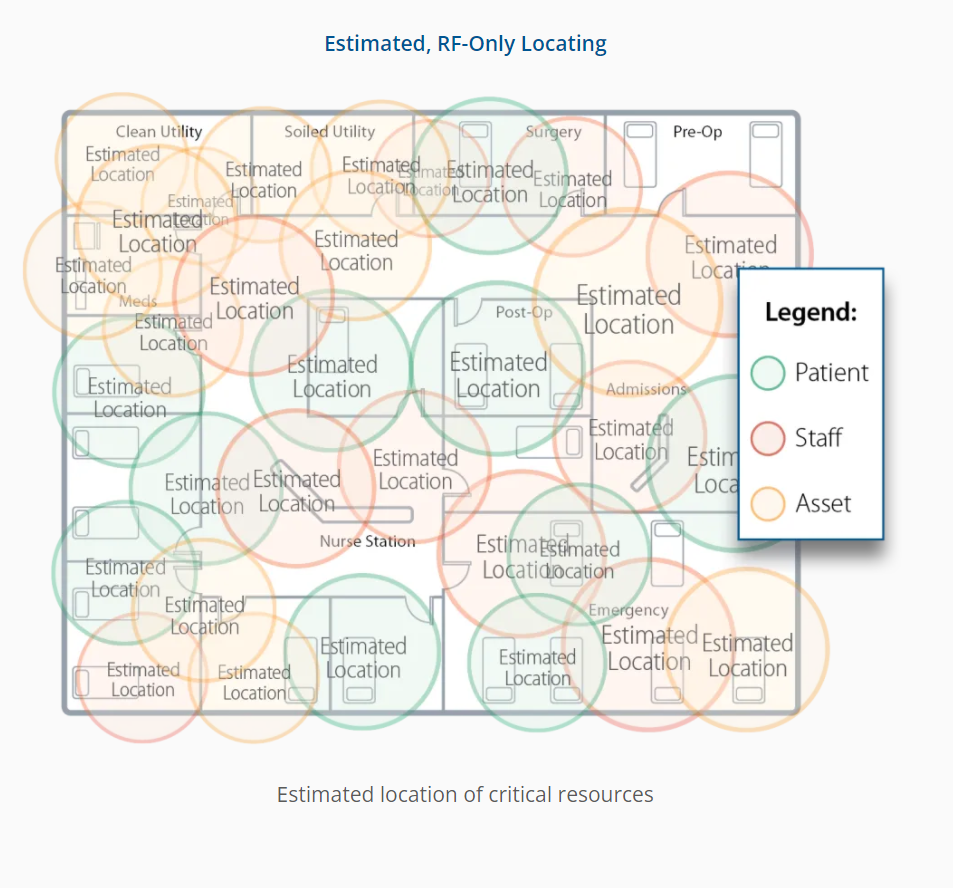

RTLS Innovations: Multi-Mode Technology
CenTrak’s Multi-Mode RTLS Technology sets itself apart by employing a combination of Second-Generation infrared locating (Gen2IR™), Wi-Fi, Low-Frequency RF, UHF Active RFID, Bluetooth Low Energy (BLE), and others to future-proof investment and maximize ROI.
The battery-operated infrastructure components (such as monitors or Virtual Walls™) are able to give you a unique location number and pinpoint any tagged assets in the room or zone that your healthcare facility has defined. They can be placed anywhere they are needed, including rooms, bays, nursing stations, hallway segments and other relevant workflow areas without the need for costly hardwiring. The technology also has the ability to leverage your own Wi-Fi or BLE network to communicate location and condition information to authorized hospital personnel.
Open Platform – CenTrak’s open platform enables location data to be streamed in real-time to over 100 integrated partner applications. The platform also supports the use of location data from Wi-Fi clients including computers on wheels, IV pumps and phones.
Ultimate Accuracy & Flexibility – CenTrak’s battery-operated devices can be positioned wherever accurate location data. Therefore, when a tag reads a room number, there are no errors. This is certainty-based RTLS, a requirement for today’s healthcare automation and workflow applications.
Update Your Hospital System With RTLS Technology From CenTrak
Rather than just system specifications, it is important and beneficial for you to focus on the achievable and demonstrable real-world benefits associated with RTLS technology, such as cost reductions and optimized efficiency as well as increased staff and patient satisfaction. Through CenTrak’s EngageSM consulting services, CenTrak is committed to helping you achieve these goals by building smarter, more streamlined operations programs in your health system. CenTrak’s RTLS is certainty-based and customer-focused. It’s technology you can trust.
Want to learn more about CenTrak’s Real Time Location Services? For more information, request a demo today.


